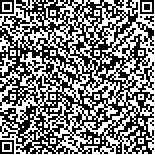黄素芳,王朝亮,董学广,等.神经旁注射鼠神经生长因子对肘管综合征患者手肌肉功能恢复的影响[J].中华物理医学与康复杂志,2019,41(2):106-110
扫码阅读全文

|
| 神经旁注射鼠神经生长因子对肘管综合征患者手肌肉功能恢复的影响 |
|
| |
| DOI:DOI:10.3760/cma.j.issn.0254-1424.2019.02.006 |
| 中文关键词: 肘管综合征 神经生长因子 肌力 手功能 |
| 英文关键词: Cubital tunnel syndrome Nerve growth factors Muscle strength Hand function |
| 基金项目: |
|
| 摘要点击次数: 9183 |
| 全文下载次数: 7546 |
| 中文摘要: |
| 目的 观察鼠神经生长因子(mNGF)定时定点神经旁注射对肘管综合征患者手肌肉运动功能恢复的影响。 方法 选取中重度肘管综合征术后患者138例,按随机数字表法分为A组(采用定时定点神经旁注射mNGF治疗), B组(采用肌肉注射mNGF治疗)和C组(采用甲钴胺肌肉注射治疗),每组46例。A组患者肘管尺神经旁注射mNGF 20 μg,注射点每日向远端1 mm,1次/日;B组肌肉注射mNGF 20 μg,1次/日;C组肌肉注射甲钴胺注射液500 μg,3次/周。治疗4周为1个疗程,停药2个月后,开始第2个疗程治疗,共治疗2个疗程。分别于药物注射前(治疗前)和注射疗程结束后8个月(治疗后),对3组患者的手内肌功能、尺神经电生理变化及手功能恢复情况的疗效(优良率)进行测定和统计学分析比较。 结果 3组患者治疗后的手内肌功能及神经电生理均较组内治疗前有显著改善,差异均有统计学意义(P<0.05)。治疗后,A组46例患者的手内肌萎缩9例、Tinel征8例、夹纸试验9例、爪形手4例,较组内治疗前(36、36、32和26例)明显改善(P<0.05),亦明显优于同时间点B组(19、20、18和14例)和C组(28、30、29和22例),组间差异有统计学意义(P<0.05)。A组患者治疗后的上肢功能测定表(DASH)上肢功能评分为(29.64±9.73)分,明显均优于B组[(42.55±8.46)分]和C组[(46.57±9.57)分],组间差异有统计学意义(P<0.05)。治疗后,A组患者的尺神经传导速度、潜伏期和波幅分别为(40.37±8.32)m/s、(6.79±1.27)ms和(7.87±2.12)mV,较组内治疗前[(27.76±5.14)m/s、(9.89±3.21)ms和(5.02±3.78)mV]及同时间点B组[(35.48±7.64)m/s、(8.21±1.15)ms和(6.39±2.42)mV]和C组[(31.47±6.58)m/s、(9.11±1.12)ms和(5.23±2.84)mV]均有明显改善,且组内治疗前后及组间治疗后比较,差异均有统计学意义(P<0.05)。治疗后,A组患者手功能恢复情况的优良率为91.3%,明显优于B组(优良率76.09%),B组优于C组(优良率58.70%)。 结论 mNGF定时定点神经旁注射对中重度肘管综合征患者尺神经和手肌肉功能恢复有促进作用,其效果优于肌肉注射。 |
| 英文摘要: |
| Objective To observe the effectiveness of injecting mouse nerve growth factor (mNGF) on the recovery of hand motor function among patients with cubital tunnel syndrome. Methods A total of 138 patients with moderate to severe cubital tunnel syndrome were randomly divided into groups designated as A, B and C, each of 46. Twenty micrograms of mNGF was injected daily 1 mm from the ulnar nerve at the cubital tunnel for the patients of group A and the injection site was moved 1 mm distally everyday along the nerve , but injected intramuscularly for those in group B. Those in group C received 500 μg of mecobalamin injected intramuscularly 3 times a week. The whole intervention consisted of two 4-week phases, with an interval of 2 months. Before and after the intervention, the function of internal hand muscles, hand function recovery rates and any electrophysiological changes in the ulnar nerve were measured and compared between the two groups. Results All of the patients showed significant improvement in hand muscle function and neuroelectrophysiology. The incidence of had muscle atrophy, Tinel′s sign, positiveness in the paper clamping test and claw hand all significantly improved compared with before the treatment in all three groups. The average Disability of Arm Shoulder and Hand score in group A after the treatment was significantly higher than the group B and group C averages. The average ulnar nerve conduction velocity, incubation period and amplitude of group A after the treatment were all significantly better than before the treatment and better than the other groups′ averages. After the treatment, the average hand function recovery in group A reached 91%, significantly higher than in groups B (76%) and C (59%). Conclusion Injecting mNGF next to the ulnar nerve is superior to injecting it intramuscularly in promoting the recovery of the ulnar nerve and hand function for patients with moderate to severe cubital tunnel syndrome. |
|
查看全文
查看/发表评论 下载PDF阅读器 |
| 关闭 |
|
|
|